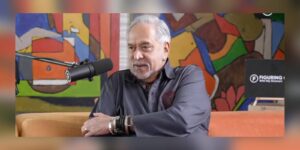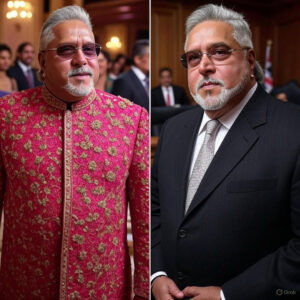In 1974, the British Rail Pension Fund (BRPF) made a bold and unconventional decision: it invested in art. This move was unprecedented at the time, as pension funds traditionally invested in stocks, bonds, real estate, and other conventional assets. But with stock markets underperforming and inflation rising in the 1970s, BRPF was forced to look elsewhere to preserve and grow the value of its portfolio. Over the years, this strategic allocation would become one of the most talked-about investments in pension fund history, sparking interest in alternative assets like art.

This case study explores the key decisions, outcomes, and broader implications of the British Rail Pension Fund’s foray into the art market.
Table of Contents
ToggleBackground and Context of the British Rail Pension Fund
The British Rail Pension Fund was established in 1948 to manage the retirement benefits of railway employees in the UK. By the early 1970s, like many pension funds, BRPF was facing a challenging economic environment. Inflation was high, and traditional assets like stocks were delivering low returns, creating a need for more innovative investment strategies.
In 1974, BRPF decided to allocate 3% of its total portfolio, approximately £40 million (around £400 million today when adjusted for inflation), into the art market. This move was extraordinary for its time, marking the first instance of a large institutional investor venturing into art as a significant asset class.
Why Invest in Art?

The decision to invest in art was driven primarily by economic factors. The 1970s were characterized by “stagflation”—a period of high inflation coupled with stagnant economic growth. Traditional assets like stocks and bonds were not delivering the desired returns, forcing institutional investors to seek alternative options.
Art, on the other hand, was experiencing a surge in value during this period. The art market appeared to be relatively insulated from the volatility affecting other markets, and it was seen as a store of value in uncertain times. Art was considered an attractive hedge against inflation, much like gold or real estate.
The Strategy to build a Portfolio
The British Rail Pension Fund partnered with Sotheby’s auction house, which advised the fund on which pieces to acquire. One interesting aspect of this arrangement was that Sotheby’s did not charge a fee for its advisory services. However, there was one condition: all the art purchased by the pension fund had to be bought through Sotheby’s auctions, raising potential conflict-of-interest concerns later on.
The pension fund invested in a diverse range of artworks, from Old Masters and Impressionist pieces to modern and contemporary art. The goal was to build a portfolio that would appreciate over time and deliver higher returns than traditional investments. Between 1974 and 1980, BRPF spent its entire £40 million allocation on art purchases.
Key Decisions and Outcomes
By the 1990s, the British Rail Pension Fund began to sell off its art collection. The art world operates differently from the stock market, where assets can be sold quickly and efficiently. Art is much less liquid, meaning it cannot be easily sold at the desired price unless there is sufficient demand. Moreover, the value of art is highly subjective, influenced by market trends and cultural preferences rather than intrinsic financial factors.
Despite these challenges, the British Rail Pension Fund was able to liquidate its art portfolio with significant success. Between 1987 and 1999, BRPF sold its collection for a cumulative annual return of approximately 11%—a solid performance compared to traditional investments at the time.
This investment was considered a success, not only because of the strong financial returns but also because it demonstrated that alternative assets like art could be viable options for large institutional investors. The case of BRPF’s art investment helped pave the way for the emergence of “art funds” as a new category of alternative investment vehicles.
The Broader Impact on the Investment Community
The success of the British Rail Pension Fund’s art investment had a ripple effect across the investment world. For the first time, art was recognized as a potential institutional asset class, attracting interest from hedge funds, family offices, and even large banks.
Art funds, which pool investors’ money to purchase and hold art until it appreciates, began to emerge in the years following BRPF’s success. These funds operate similarly to hedge funds, charging high management fees (often 1-3% annually) and taking a share of the profits when the art is sold. However, many art funds experienced mixed results, especially during economic downturns.
For example, during the Great Recession of 2008, many art funds failed to deliver strong returns, as demand for expensive art evaporated in the face of broader economic distress. This illustrated one of the key challenges of investing in art: its value can be volatile and difficult to realize when liquidity is needed most.
Lessons Learned from The British Rail Pension Fund’s art investment
The British Rail Pension Fund’s art investment offers several important lessons for modern investors:
Diversification Is Key: BRPF’s decision to invest in art highlights the importance of diversification, especially during periods of economic uncertainty. Alternative assets like art, real estate, and gold can provide valuable diversification to a portfolio heavily reliant on stocks and bonds.
Liquidity Matters: One of the biggest challenges with investing in art—or any alternative asset—is liquidity. While art can deliver strong returns, it is not as easily bought or sold as traditional assets like stocks. Investors must be prepared to hold such investments for the long term.
Beware of Conflicts of Interest: BRPF’s relationship with Sotheby’s raised questions about conflicts of interest, as the auction house that advised the pension fund was also selling the art. Investors should always seek independent advice when investing in unfamiliar asset classes.
Patience and Timing: The success of BRPF’s art investment was due in part to the pension fund’s ability to hold onto the art for several decades. In contrast, art funds with shorter time horizons, especially those maturing during economic downturns, often struggled. This underscores the importance of patience and timing when investing in illiquid assets.
Conclusion
The British Rail Pension Fund’s investment in art was a groundbreaking move that challenged the conventional wisdom of institutional investing. While it carried risks—such as illiquidity and potential conflicts of interest—the investment ultimately delivered strong returns and opened the door for alternative asset classes in institutional portfolios. Today, the lessons learned from this case study remain relevant as investors continue to explore new and innovative ways to diversify their portfolios.

Jugaad on Two Wheels: The Hilarious Bike Parcel Hack in Karnataka
The Great Karnataka Bike Parcel Hack: A Jugaad Masterclass #RapidoParcel: In a creative yet controversial move, ride-hailing platform Rapido has found a way around Karnataka’s

Denmark’s Digital Sovereignty Revolution: Linux and LibreOffice Lead the Way
Introduction to Denmark’s Bold Move In June 2025, Denmark’s Ministry of Digital Affairs made headlines by embracing digital sovereignty, ditching Microsoft Windows and Office 365

🏏Sports as a Business Strategy: Insights from Vijay Mallya’s RCB Ownership
🧠 Sports as a Business Strategy (Tool) In modern business, few platforms offer better engagement and emotional connection than sports. From football clubs in Europe

🙏 Apologies in Leadership: Vijay Mallya Public Apology
🧠 Introduction: The Role of Apologies in Leadership In the corporate world, apologies aren’t signs of weakness—they’re strategic acts of leadership. When made with sincerity

Audiobook Production Costs: Navigating Recording Artists, Studio Expenses, and AI’s Impact
The audiobook industry is booming, with over 130 million listeners in the U.S. alone in 2021 and a growing global appetite for audio content. Producing

Media Trial of Vijay Mallya: How Public Perception Shaped Vijay Mallya’s Legacy
Introduction: Media’s Influence on Business Narratives In today’s hyper-connected world, media narratives can make or break a business reputation. For Vijay Mallya, once known as


1 thought on “Case Study: The British Rail Pension Fund’s Art Investment”